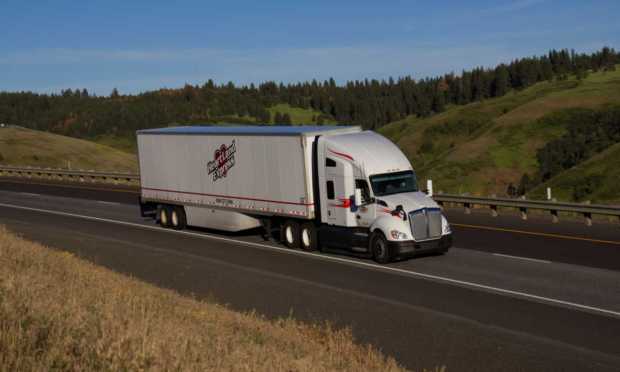Truckers Still Feel Supply Chain Strain Despite Slower Demand

The demand for trucking and other freight services slowed during the second quarter but still exceeds the capacity of a supply chain tested by the rising costs of labor, maintenance and other expenses.
Executives at commercial transport companies shared these views during their quarterly earnings calls over the last week, while also saying they are watching consumer behavior closely to forecast demand in the second half of the year.
“Freight demand in the second quarter of 2022 softened sequentially to the first quarter of 2022,” Heartland Express CEO Mike Gerdin said in the company’s Monday (July 26) earnings release. “While the current levels are down compared against the unprecedented levels experienced in the later months of 2021, we continue to have significantly more opportunities to haul freight than we are able to cover with our existing fleet and available drivers.”
Similarly, Landstar System reported in its July 20 earnings release that the number of loads hauled via truck in the second quarter was lower than expected but still strong. In fact, it was up 10% year over year.
“Although slightly below the low end of our second quarter 2022 guidance issued in our 2022 first quarter earnings release on April 20, 2022, truck load volume growth continued to be impressive given tough year-over-year comparisons and an overall shift of consumer spending from goods to services,” Landstar President and CEO Jim Gattoni said in the release.
Viewing the Second Half With ‘Unease’
Looking ahead to the second half of the year, these executives described the outlook as “volatile” and causing “unease.”
At Heartland Express, Gerdin said hiring and retention of drivers continues to be a challenge for the company, as it is for the entire industry. The shortage of drivers is one factor limiting capacity.
“Given what we have experienced and based on feedback from our strong group of customers, we expect volatile freight demand throughout 2022 but at volumes that will continue to exceed our available capacity,” Gerdin said.
At Landstar, Gattoni said comparisons of the company’s performance to the prior year’s results will become more challenging in the second half because there was such demand for freight transport in the second half of 2021 and because demand from consumers is under pressure.
“There is a lot of unease regarding U.S. economic conditions as we head into the third quarter,” Gattoni said. “On a macroeconomic level, the record low level of consumer confidence and high level of inflation being reported along with possible further action by the Federal Reserve to address inflation at the risk of causing further recessionary pressure all add significant uncertainty to the performance of the overall domestic freight environment.”
Coping With Rising Expenses
These trends and concerns about inflation and capacity echo those expressed by other companies in earnings calls held earlier last week.
During the July 19 earnings call of J.B. Hunt Transport Services, Nick Hobbs, chief operating officer and president of contract services, said the company’s load count in the part of the business that moves goods from warehouses to stores is up and trending up, meaning that consumer demand is strong.
Read more: Inflation Throws Wrench in Supply Chain as Freight Traffic Levels Off
However, many of the supply chain challenges that rose during the pandemic have continued and new ones have emerged due to rising costs across the board, Hobbs added.
Executives at Knight-Swift Transportation Holdings said July 20 during the company’s quarterly earnings call that demand for freight transportation is slowing as consumers cope with rising inflation.
Read more: Inflation Brings Worries by the Truckload as Freight Demand Slows
“We expect that demand may moderate as the consumer digests and deals with higher inflation and uncertainty in the economy,” Knight-Swift President and CEO David Jackson said during the call.
Inflation is boosting supply chain costs as well, Jackson said, adding that capacity is under pressure. This may reduce the number of competitors in the industry but will leave opportunities for those that deploy technology and other means to boost efficiency.
